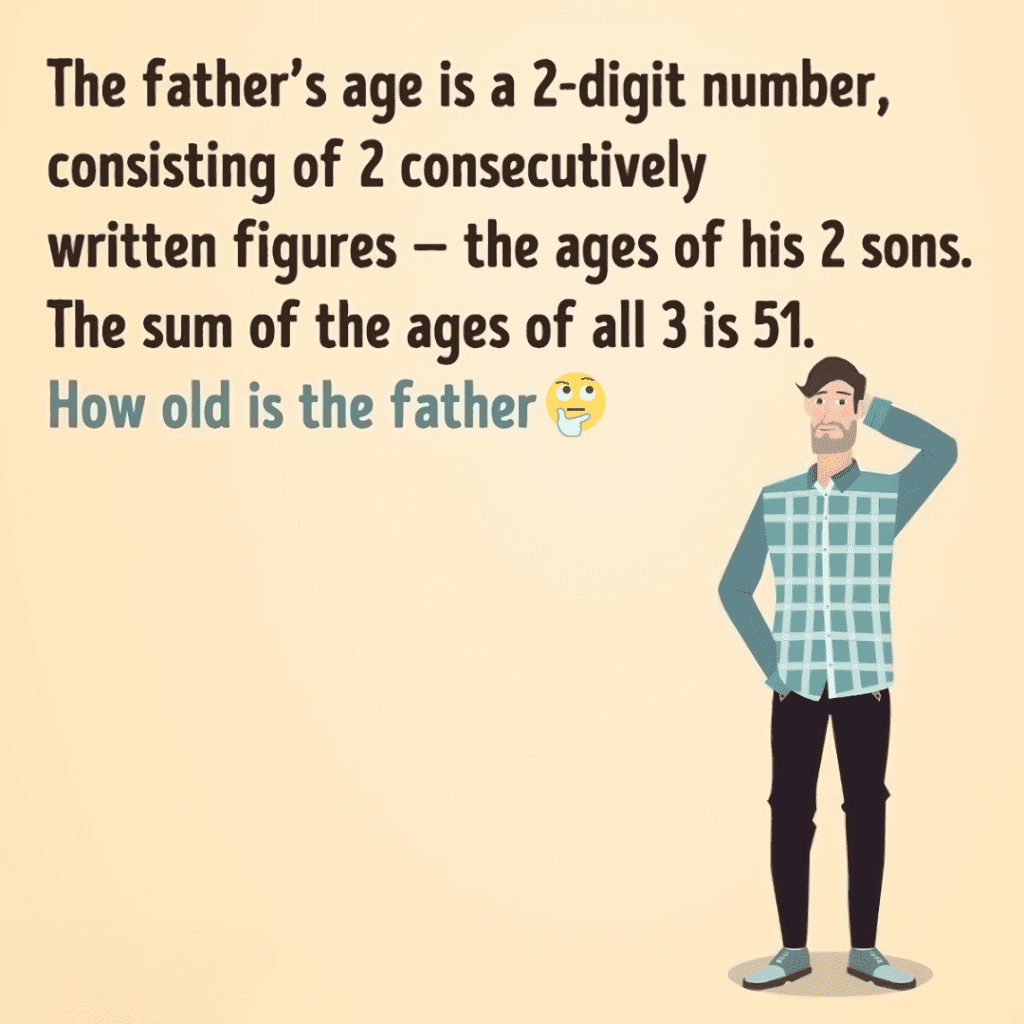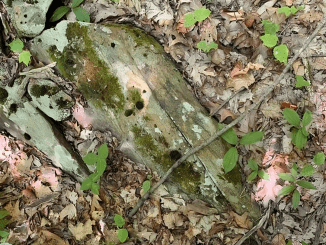Ready to flex those mental muscles? Here’s a puzzle that’s bound to make you think twice! Imagine a father whose age is represented by a two-digit number formed by two consecutive digits—the ages of his two sons. Together, the sum of all three ages is 51. So, the big question is: How old is the father?
These types of puzzles are all about paying attention to details and connecting clues. Let’s walk through each step to uncover the father’s age and explore why puzzles like this are such great brain exercises.

Understanding the Puzzle: Key Clues to Look For
This puzzle might seem straightforward, but the devil is in the details. To solve it, we need to focus on two important clues:
- The father’s age is a two-digit number made up of two consecutive digits.
- The sum of the father’s age and his sons’ ages equals 51.
At first glance, it might seem like we can guess numbers at random, but there’s a more systematic way to crack this riddle.
Step-by-Step Solution: Breaking Down the Puzzle
Let’s go through this puzzle methodically. By defining variables and using a bit of algebra, we can solve it accurately.
Step 1: Define the Variables
- Let’s call the father’s age aaa and his sons’ ages bbb and ccc.
- The puzzle tells us that the father’s age, aaa, is a two-digit number formed by two consecutive digits. This means that if the tens digit is bbb, the ones digit will be ccc.
We can express the father’s age mathematically as:a=10b+ca = 10b + ca=10b+c
Step 2: Use the Sum of Ages
We also know that the combined ages of the father and his two sons add up to 51:a+b+c=51a + b + c = 51a+b+c=51
Substitute a=10b+ca = 10b + ca=10b+c into this equation:10b+c+b+c=5110b + c + b + c = 5110b+c+b+c=51
Simplify by combining like terms:11b+2c=5111b + 2c = 5111b+2c=51
Step 3: Solve for Possible Values
Now, let’s isolate ccc:2c=51−11b2c = 51 – 11b2c=51−11bc=51−11b2c = \frac{51 – 11b}{2}c=251−11b
We want ccc to be an integer since ages are whole numbers. This means that 51−11b51 – 11b51−11b must be even. Let’s try different values for bbb to ensure that ccc is a valid integer.
Testing Values for bbb:
- Try b=3b = 3b=3:c=51−11×32c = \frac{51 – 11 \times 3}{2}c=251−11×3 c=51−332c = \frac{51 – 33}{2}c=251−33 c=182=9c = \frac{18}{2} = 9c=218=9Here, b=3b = 3b=3 and c=9c = 9c=9, which fits the criteria! Now, let’s use these values to find the father’s age:a=10×3+9=39a = 10 \times 3 + 9 = 39a=10×3+9=39So, the father is 39 years old, with his sons being 3 and 9 years old.
- Double-Check the Sum:39+3+9=5139 + 3 + 9 = 5139+3+9=51The total is indeed 51, which confirms our solution.
Solution Recap
We’ve determined that the father is 39 years old, and his sons are 3 and 9 years old. The puzzle’s tricky part was interpreting the father’s age as a two-digit number with consecutive digits and ensuring that the ages add up correctly.
Final Thoughts: The Joy of Problem Solving

Puzzles like this one remind us that the simplest approach is often the best. It’s a satisfying feeling to work through each step, connect the clues, and arrive at the right answer. They also show us the importance of looking closely at details, since a tiny clue can make all the difference.
So, how did you do? Did you arrive at the answer using a different approach? Share this puzzle with friends or family and see if they can solve it too. Puzzles like these are not only fun but are also great ways to keep your mind sharp!
When you encounter a puzzle like this again, remember: take it step-by-step, consider each clue, and enjoy the process of unraveling the mystery. Who knows? You might find yourself loving the challenge!


